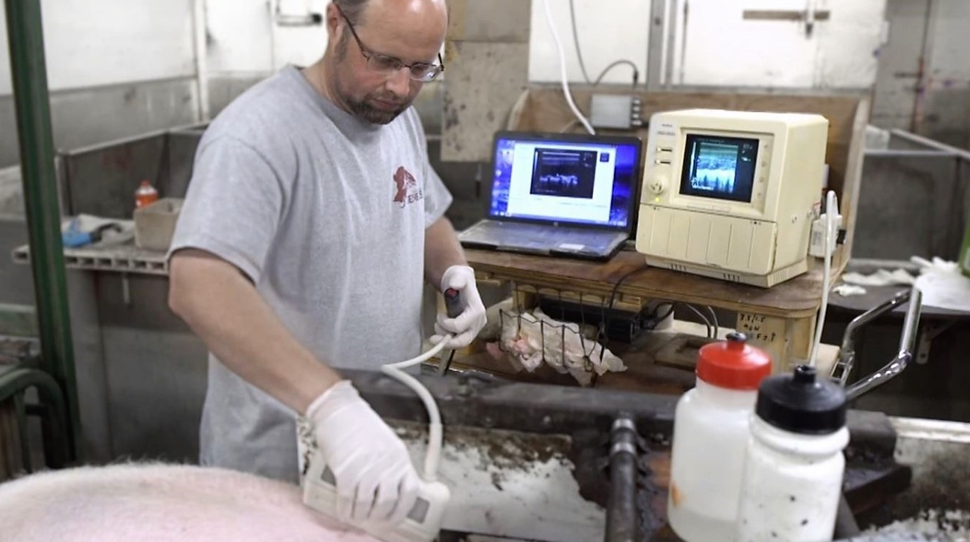



Why adjust end of test pig performance data?
Selection of parents of the next generation of pigs in nucleus breeding programmes requires accurate estimation of breeding values for several traits.Among the traits evaluated in a typical swine genetic improvement scheme includes growth rate and ultrasound backfat and loin depths measured at a given target weight or age.
These traits are collected through performance recording of individual pigs over a range of weights and ages. Consequently, adjustment factors are required to standardise performance information before being used for genetic evaluation (Moeller et al., 1998, J. Anim. Sci. 76(8):2008-16).
The assumption is that fat accretion and growth rate are linear within a short time period and differ among pigs, thus, adjusting these performance records will account for differences in growth patterns among pigs (Yun Ho Choy et al., 2015, Asian-Australas J. Anim. Sci. 2015 Dec; 28(12): 1696–1702).
Additionally, adjustment factors should be developed for different genders and breeds and be reviewed periodically to account for changes resulting from genetic selection.
At Genesus Inc., the commercial growth rate trait of interest is days from birth to harvest (shipping) body weight and the backfat and loin depth at harvest are important components of carcass lean yield. Pens of pigs are performance tested to a target end of test weight. The actual age and weight of the individual pigs at end of performance test are used to adjust ultrasound backfat depth, loin depth and age to a standard harvest weight.

To date, Genesus has accumulated over one million individual body weights, backfat and loin depth performance records from several testing locations and for the three main breeds (Duroc, Landrace and Yorkshire) involved in the Genesus Genetic Improvement Program. This has offered us the opportunity to regularly review our adjustment factors and to develop new ones. Recently, we completed the process of developing new adjustment factors utilising all available data. Here, adjustment factors for age, backfat and loin depths were developed for specific breeds, sex and end of test weight targets. These new adjustment factors will be used in the genetic evaluation:
- To standardised individual pig body weight and ultrasound backfat and loin depths to a common weight target, thus, reducing variations due to different weights and ages.
- To allow the genetic component of performance differences to be accurately estimated.
- To accurately identify and select individuals that are genetically superior for growth rate.
By continually collecting performance records and updating weight adjustment factors with these data, Genesus Inc. continues to improve and develop its breeding stock and provide best genetics to all Genesus customers.









